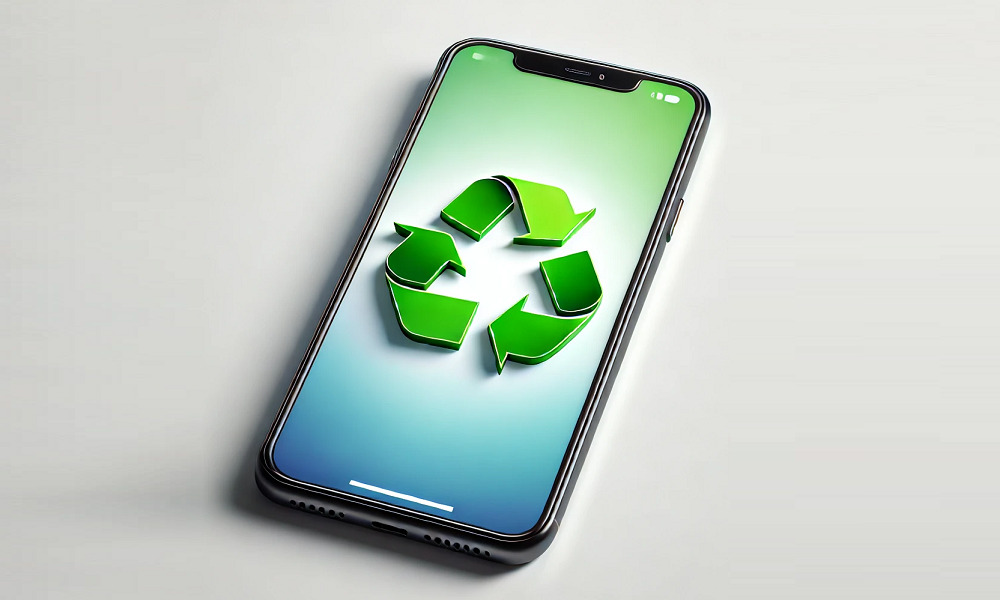Reviews
Sustainable Tech: Environmental Benefits of Buying Refurbished iPhone 14

Smartphone innovation comes at a cost—our planet.
Each new device drives resource extraction, energy consumption, and rising levels of e-waste. As consumers, our choices play a significant role in mitigating these effects. Refurbished phones offer a practical and sustainable alternative, reducing the environmental burden of our tech habits.
This article explores the environmental benefits of purchasing refurbished iPhones, focusing on the iPhone 14. By examining the manufacturing impact, the reduction of e-waste, and the advantages of a circular economy, we’ll highlight why refurbished devices pave the way for a more sustainable tech future.
Environmental Impact of Smartphone Manufacturing
Smartphone manufacturing is a resource-intensive process with significant environmental consequences. Every device produced requires vast raw materials, energy, and water, contributing to pollution and resource depletion. Let’s break down the key environmental impacts:
1. Raw Material Extraction
Smartphones rely on precious materials like gold, cobalt, and lithium. Mining these elements often destroys habitats soil, and contaminates water. For example, producing a single smartphone requires roughly 30 different metals.
Mining in regions such as the Democratic Republic of Congo, where abundant cobalt, often involves unethical practices, including child labour and unsafe working conditions.
2. Energy Consumption
Manufacturing one smartphone emits an estimated 80-90 kg of CO2, largely due to energy-intensive processes like smelting metals and assembling components.
The energy used during production often comes from non-renewable sources, exacerbating greenhouse gas emissions.
3. Water Usage
A smartphone requires around 3,000 gallons of water, from material extraction to assembly, during its production lifecycle.
This extensive water use impacts local ecosystems, especially in water scarcity regions.
4. E-Waste
According to the Global E-Waste Monitor, 53.6 million metric tons of e-waste were generated in 2019, and only 17.4% were recycled.
As consumers frequently upgrade to the latest models, millions of older devices end up in landfills, leaking hazardous chemicals into the environment.
Visualising the Impact
Below is a table summarizing the environmental footprint of producing one smartphone:
| Impact Area | Quantifiable Impact |
| Carbon Emissions | 80–90 kg of CO2 per device |
| Water Consumption | 3,000 gallons |
| Rare Earth Metal Use | 30+ metals per device |
| E-Waste Contribution | Millions of discarded phones annually |
How Refurbished Phones Reduce E-Waste
Electronic waste, or e-waste, is one of the fastest-growing waste streams globally, with discarded smartphones accounting for a significant portion. Refurbished phones present a compelling solution to this issue, helping to minimise the environmental impact of our tech consumption.
1. Extending Device Lifespan
Refurbished phones are pre-owned devices restored to a like-new condition. By reusing components and devices, refurbished phones extend the functional life of a smartphone, delaying its entry into the waste stream.
By diverting phones from landfills, refurbishment reduces the release of harmful substances like lead and mercury, which can leach into soil and water.
2. Reducing Demand for New Phones
Every refurbished phone sold means one less new phone needs to be produced. This reduces the environmental footprint associated with raw material extraction, energy consumption, and emissions.
As refurbished devices gain popularity, they help shift consumer behaviour away from the “buy-new-every-year” mindset.
3. Promoting Recycling and Recovery
Many refurbished phones are sourced from trade-ins or discarded devices. This practice encourages consumers to recycle old phones instead of letting them gather dust or end up as waste.
Components like batteries, screens, and circuit boards are often replaced or repaired, making full use of the materials in existing devices.
Quantifying the Impact
The chart below highlights the potential e-waste reduction achieved by adopting refurbished phones:
| Scenario | Estimated E-Waste Reduction |
| 1 Million Phones Refurbished | ~20,000 Metric Tons Saved |
| Consumer Adoption Rate at 50% | ~500,000 Fewer Phones Disposed |
| Circular Recovery of Materials | ~80% of Components Reused |
Real-World Example: Apple’s Refurbished Programme
Apple has taken steps to combat e-waste through its Certified Refurbished Programme. By offering high-quality refurbished iPhones, including the iPhone 14, Apple ensures that devices meet rigorous standards while reducing waste.
iPhone 14’s Role in Sustainable Tech
As one of the most advanced smartphones on the market, the iPhone 14 represents not only cutting-edge technology but also an opportunity to lead the way in sustainable practices. Refurbished versions of this device play a crucial role in minimising environmental harm while setting a precedent for eco-friendly consumer habits.
1. Built for Durability and Longevity
The iPhone 14 has premium components, such as aerospace-grade aluminium and ceramic shield glass. These durable materials make the device ideal for refurbishment, as they can withstand the wear and tear of multiple ownership cycles.
Apple’s commitment to long-term iOS support ensures that devices like the iPhone 14 remain functional and secure for years, reducing the need for frequent upgrades.
2. Efficient Resource Recovery
Apple has incorporated recycled rare earth elements in its manufacturing, including magnets in the iPhone 14. When refurbished, these components avoid the need for further mining and production.
With enhanced battery life and replaceable batteries in refurbished units, the iPhone 14 demonstrates a focus on longevity, making it a sustainable choice.
3. Environmental Advantages of Refurbishment
According to Apple’s environmental reports, a refurbished iPhone 14 saves approximately 80% of the CO2 emissions compared to producing a new device.
By refurbishing and reselling these devices, the iPhone 14 avoids contributing to the 50 million metric tons of e-waste generated annually worldwide.
Consumer Appeal:
Refurbished iPhone 14 models appeal to a growing demographic of environmentally conscious consumers. These devices offer the same performance as new ones but at a significantly reduced environmental and financial cost. A survey by Deloitte found that nearly 47% of consumers are now willing to buy refurbished electronics to reduce their carbon footprint.
Benefits of Buying Refurbished Over New
Opting for a refurbished phone, such as the iPhone 14, offers numerous advantages beyond its environmental benefits. Consumers increasingly view refurbished devices as a smart alternative to buying brand-new ones. Here’s a breakdown of the key benefits:
1. Cost Savings Without Sacrificing Quality
Refurbished phones are typically 20–50% cheaper than new models, providing significant savings for budget-conscious buyers.
Reputable sellers, including Apple’s Certified Refurbished Programme, rigorously test and restore devices to ensure they function like new. Buyers receive the same high-performance features but at a fraction of the cost.
2. Warranty and Support
Refurbished phones often come with warranties similar to new devices, giving buyers peace of mind. For example, Apple’s refurbished iPhones include a one-year warranty and the option for extended coverage through AppleCare.
3. Sustainable Choice
Choosing a refurbished iPhone 14 reduces demand for new manufacturing, minimising the associated resource extraction, carbon emissions, and e-waste.
Consumers who choose refurbished devices contribute to a circular economy, extending the lifecycle of tech products and supporting sustainability-focused businesses.
4. Upgraded Performance for Less
Refurbished iPhone 14 models retain premium features like advanced cameras, high-speed processors, and 5G connectivity, making them competitive with brand-new devices.
These phones benefit from continued iOS updates, ensuring long-term functionality and security.
5. Reduced Depreciation
New devices lose value rapidly within the first year. Refurbished phones have depreciated, so buyers avoid the steep decline in resale value, making them a financially smarter investment.
Conclusion
The environmental challenges posed by smartphone manufacturing and e-waste demand urgent action. Refurbished phones, like the iPhone 14, offer a practical and impactful solution. By extending the lifecycle of devices, reducing resource extraction, and supporting the principles of a circular economy, refurbished phones empower consumers to make sustainable choices without compromising on quality or performance.
From minimising carbon emissions to promoting affordability, refurbished devices bridge the gap between cutting-edge technology and environmental responsibility. As consumers increasingly recognise the value of refurbished products, their growing adoption has the potential to transform the tech industry into a more sustainable and ethical domain.

-

 US News5 days ago
US News5 days agoJetBlue flight diverts to Tampa after altitude drop injures at least 15
-

 World1 week ago
World1 week agoU.S. Navy helicopter and fighter jet crash in South China Sea; all crew rescued
-

 Legal1 week ago
Legal1 week agoMultiple injured in shooting at Lincoln University in Pennsylvania
-

 World2 days ago
World2 days agoStrong 6.3 earthquake strikes northern Afghanistan; felt across Pakistan
-

 World3 days ago
World3 days ago10 people stabbed on train in Huntingdon, England
-

 World2 days ago
World2 days agoProtesters storm government building in Mexico after killing of local mayor
-

 US News5 days ago
US News5 days agoTrump says U.S. will resume nuclear weapons testing ‘on an equal basis’
-

 US News7 days ago
US News7 days agoDamage reported in Kilgore, Texas following tornado warning




